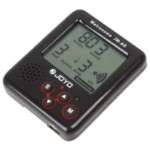Didgeridoo – Australia’s musical heritage
The sound of this ancient instrument is difficult to describe in words. A low hum, a rumble, a bit reminiscent in timbre of the throat singing of Siberian shamans. He gained fame relatively recently, but has already won the hearts of many folk and ambient musicians.
The didgeridoo is a folk wind instrument of the Australian Aboriginals. Represents hollow tube 1 to 3 meters long, on one side of which there is a mouthpiece with a diameter of 30 mm. Made from wood or bamboo trunks, you can often find cheap options made from plastic or vinyl.
History of the didgeridoo
The didgeridoo, or yidaki, is considered one of the most ancient instruments on earth. The Australians played it when humanity did not yet know any notes. Music was necessary for the pagan ritual of Korabori.
Men painted their bodies with ocher and charcoal, wore feather jewelry, sang and danced. This is a sacred ceremony through which the Aboriginal people communicated with their gods. The dances were accompanied by drumming, singing and the low rumble of the didgeridoo.
These strange instruments were made for the Australians by nature itself. During times of drought, termites would eat away at the heartwood of the eucalyptus tree, creating a cavity inside the trunk. People cut down such trees, cleared them of tripe and made a mouthpiece from wax.
Yidaki became widespread at the end of the 20th century. Composer Steve Roach, while traveling around Australia, I became interested in interesting sounds. He learned to play from the Aboriginal people and then began using the didgeridoo in his music. Others followed him.
The Irish musician brought real fame to the instrument. Richard David James, writing the song “Didgeridoo”, which took British clubs by storm in the early nineties.
How to play the didgeridoo
The game process itself is very non-standard. The sound is produced by vibration of the lips and then amplified and distorted many times over as it passes through the yidaki cavity.
First you need to learn how to make at least some sound. Put the instrument aside for now and rehearse without it. You need to try snorting like a horse. Relax your lips and say “whoa.” Repeat several times and carefully observe how your lips, cheeks and tongue work. Remember these movements.
Now take the didgeridoo in your hands. Place the mouthpiece firmly against your mouth so that your lips are inside it. The lip muscles should be as relaxed as possible. Repeat the rehearsed “whoa.” Snort into the pipe, trying not to break contact with the mouthpiece.
The vast majority of people fail at this stage. Either the lips are too tense, or they do not fit tightly to the instrument, or the snort is too strong. As a result, there is either no sound at all, or it turns out to be too high, cutting into the ears.
Typically, it takes 5-10 minutes of practice to sound your first note. You will immediately know when the didgeridoo starts to speak. The instrument will vibrate noticeably, and the room will be filled with a pervasive rumble, seemingly emanating from your head. A little more – and you will learn to receive this sound (it is called Drone) straightaway.
Melodies and rhythm
When you learn to “buzz” confidently, you can go further. After all, you can’t build music from just humming. You cannot change the pitch of a sound, but you can change its timbre. To do this you need to change the shape of your mouth. Try it silently while playing sing different vowels, for example “e-e-o-o-o-o-e”. The sound will change noticeably.
The next technique is articulation. Sounds need to be isolated in order to get at least some kind of rhythmic pattern. Selection is achieved due to sudden release of air, as if you were pronouncing the consonant sound “t”. Try to give your melody a rhythm: “too-too-too-too.”
All these movements are performed by the tongue and cheeks. The position and work of the lips remain unchanged – they hum evenly, causing the instrument to vibrate. At first you will run out of air very quickly. But over time, you will learn to hum economically and stretch one breath over several tens of seconds.
Professional musicians master the so-called technique circular breathing. It allows you to play continuously, even while inhaling. In short, the point is this: at the end of the exhalation you need to puff out your cheeks. Then the cheeks contract, releasing the remaining air and preventing the lips from stopping vibrating. At the same time, a powerful breath is taken through the nose. This technique is quite complex, and learning it requires more than one day of hard training.
Despite its primitiveness, the didgeridoo is an interesting and multifaceted instrument.





